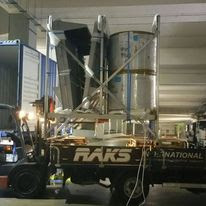How Logistics Systems Help Deliver the Desired Goods on Time
In today’s day and age, technological innovations render easy access to delivery. At the basic level, when you place an order post-midnight to curb those notorious hunger pangs, there is a supply system that strategically works up the stride to make it in time. Irrespective of the item or time and place, all supply systems have the same modus operandi; the parties, collaborations, and coordination skills vary among inter-city, inter-state, and international levels.
However, placing an order to satisfy those hunger pangs is an intra-city delivery system. Notwithstanding the same modus operandi, these different delivery types vary in the level and scale of operation and strategic management. Freight forwarding companies; in Singapore and other countries have been operating at multiple levels with considerable success. The various levels are as below:
Multi-party logistics systems
1PL - First-party Logistics
At this level, an enterprise or company transports goods from one
location to another. For example, a domino’s outlet delivers its pizza orders
via scooters or bikes directly at the customers’ residences.
2PL - Second-party Logistics
At this level, a food delivery company such as Swiggy owns bikes, scooters, and other types of vehicles to transport food orders from one location to another. For example, a restaurant, instead of taking it upon itself, hires Swiggy for delivering its food orders to the customers’ residences.
The above two logistic models are prevalent for intra-city or local
deliveries. For longer distances, the 3PL, 4PL, and 5PL delivery models come
into play. Given the ease of access across cities, states, and even national
borders, there are several 3PL companies in Singapore.
3PL - Third-party Logistics
Digging deeper into the food industry, the 3PL model comes into play
for delivering food from the farm to grocery stores. In this case, a party is
outsourced to take on managing the transportation and logistics aspect. This
outsourced party, in effect, then hires another intermediary for some part of
the process; the journey from the farm to the grocery stores is, indeed, long.
The farm hires a fleet company for transportation and logistics. The
transportation company may take on an additional party for packaging the farm
produce into cartons, for instance. So, if you own a manufacturing unit or
factory, and are looking to have your products transported and distributed
safely and reliably, 3PL companies in Singapore
are available at the rescue.
4PL - Fourth-party Logistics
Taking on the farm-to-grocery store example above, the enterprise or
company outsources not only transportation, distribution, and packaging, but
also the task of execution across the supply chain. For instance, the logistics
company manages the string of communication between the farmer and the grocery
store regarding production and inventories.
A recent addition to the logistics bundle package, and currently at a
nascent stage, the 5PL logistics model seeks to add value across the entire
supply chain through the use of technological innovations such as blockchain,
robotics, Radio Frequency Identification (RFID) devices, and others.
When faced with the problems of a complex supply chain or faster response and delivery, then 3PL and 4PL supply systems are the most profound. The main difference between these two models lies in the urgency and timeliness of delivery. For instance, if you are in the business of delivering service-level agreements to business-to-business partners, then the 4PL supply system would be the most appropriate. But, if you are engaged in the delivery of fast-moving parts or materials for assemblage, then the time factor is relatively lax, and these items can be stored at various locations that lie close to the points of higher demand.
When seeking freight forwarding companies in Singapore using
the 3PL model, these come in handy in the following services and cases:
-
Transportation
-
Warehousing
-
Packaging
-
Inventory Management
-
Freight Forwarding
-
Cross-docking

.jpg)

Comments
Post a Comment